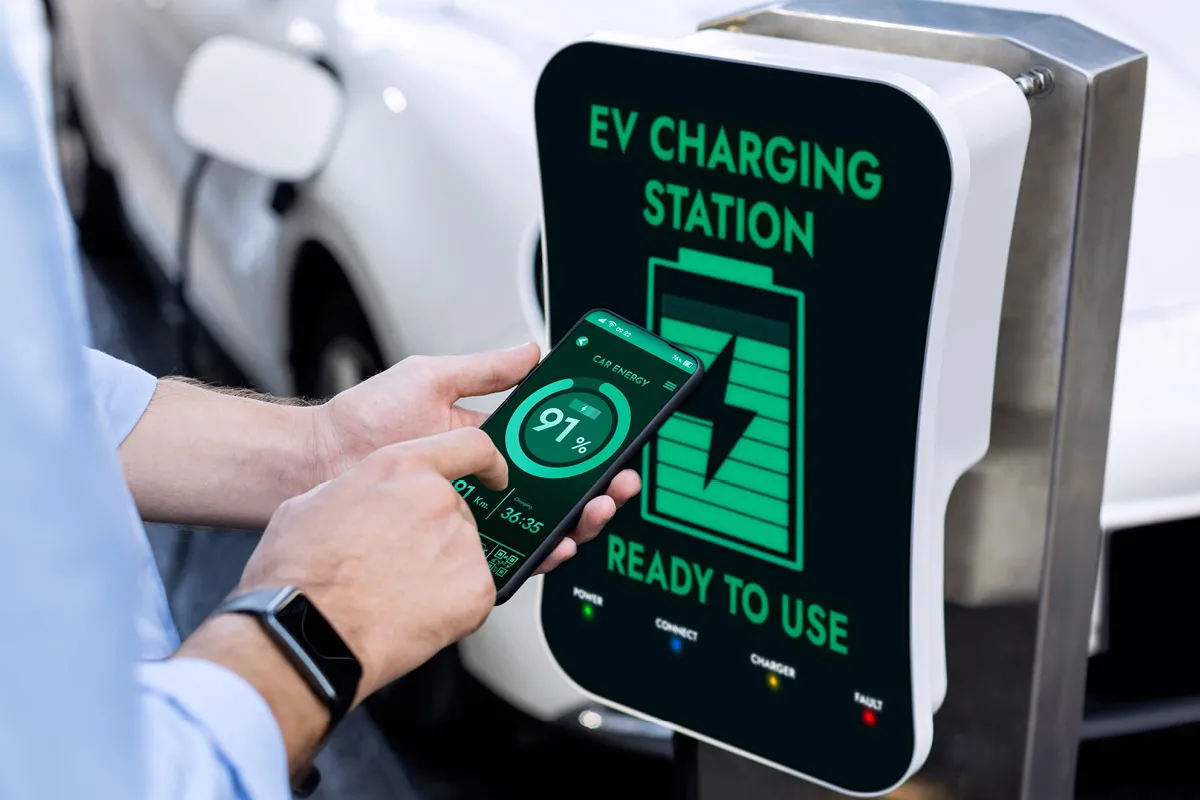With the electrification of transportation gaining momentum, the United States stands on the brink of a shift in its mobility landscape: By 2030, it is expected that there will be an 8-fold increase in public charger demand and a remarkable 16-fold surge in battery electric vehicles (BEVs) compared to 2021. This development would result in a ratio of approximately 20 BEVs per public charger and a huge demand for EV charging at public charging stations.
While flat kilowatt-hour (kWh) pricing has become the dominant price metric in EV charging, more differentiated pricing models are expected to become relevant in the future. Dynamic pricing emerges as strategy to better balance charging network utilization: By incentivizing charging in “off-peak” hours when plenty renewables are available in the grid, dynamic pricing fosters the “green transition” while unlocking significant cost savings for customers.
In the journey towards a more electrified and sustainable transportation landscape, dynamic pricing emerges as the cornerstone for unlocking the full potential of EV charging in the US. It stands as a pivotal tool in increasing utilization, promoting sustainability, and enhancing affordability.
Adapting pricing to a market in transition
In the early stages of the EV charging market, various pricing models have been experimented with, including free charging, per-minute, flat rates, or per-session pricing metrics. Among these, flat kWh pricing has emerged as the dominant logic. However, it fails to address the dynamic nature of energy costs.
Energy costs fluctuate throughout the day due to varying grid fees and renewable energy availability. In Europe, particularly in the Nordics (e.g., Denmark, Sweden, and Norway), many energy utility companies offer dynamic household energy tariffs with lower kWh prices during specific periods of the day when energy sourcing costs and grid fees are low. Companies like Tibber even go a step further by providing smart meters and hourly prices based on spot market energy prices.
Similarly, the EV charging market is witnessing a shift towards more dynamic pricing metrics. For example, EV go divides the day into four pricing windows, Early Bird (12am-8am), Off-Peak (8am-4pm; 9pm-12am), and On-Peak (4pm-9pm), with prices being the highest in the “On-Peak” window. Spirii Go, an EV charging player from Europe, even offers hourly changing charging prices based on the market price of electricity.
Dynamic pricing presents a promising approach in supporting the energy transition by incentivizing customers to charge their EVs during times of cheaper electricity, driven by abundant renewable energy and lower grid fees. This not only benefits customers but also helps to balance overall network utilization.
"Reasons Why" for Dynamic Pricing in EV charging
Dynamic pricing is poised to become the dominant pricing logic for public EV charging in the US. We see five main drivers for a wide adoption of Dynamic Pricing in the EV charging landscape:
1. Energy Transition: Promoting Sustainability
Dynamic pricing incentivizes EV charging during periods of abundant renewable energy, fostering sustainability. It also discourages charging during low renewable capacity or high demand to ensure grid stability. For instance, many energy utility companies already offer rewards such as discounts for reducing consumption during critical peak hours in Australia.
2. Network Utilization: Balancing Demand Across Charging Stations
Dynamic pricing guides customers to less-utilized charging stations with lower prices while charging price premiums at highly utilized stations fostering a more even and efficient utilization of the total charging network of the charge point operator. This is especially crucial when considering the ratio of 20 BEVs per charger in 2030 which requires an efficient and balanced use of the charging infrastructure. Tesla, for example, already considers station utilization to determine idle and congestion fees at their charging stations.
3. Higher Margin: Maximizing Revenue
Dynamic pricing captures a higher willingness-to-pay from customers during peak times while encouraging charging during off-peak hours with discounts. This enables charge point operators to make sourcing cost advantages available to customers, resulting in a win-win scenario for both: customers, who charge at lower costs, and operators, who profit from reduced sourcing costs.
4. Customer Demand and Loyalty: Meeting Customer Expectations
Our own research shows that customers are open towards dynamic pricing structures that offer potential savings compared to flat kWh-pricing in public EV charging. Besides, expanding the product portfolio by offering tiered subscriptions, like "sunny" or "night tariffs", is an appropriate way to increase customer loyalty. Additionally, dedicated loyalty programs can incentivize charging during specific hours by increasing the number of points earned.
5. Competitive Advantage: Staying Ahead in EV charging
As charge point operators increasingly deploy dynamic pricing elements, price competition intensifies and will become even more relevant in the future. Adopting dynamic pricing enables operators to offer more competitive rates compared to flat kWh-prices, ensuring relevance and competitiveness in the evolving EV charging market.
At Simon-Kucher, we offer a comprehensive solution to help leading energy and utility companies as well as charge point operator navigate the complexities of dynamic pricing successfully. We bring together industry experts, growth specialists, and data scientists to build robust dynamic pricing engines that work for you.
Get in touch with us today to explore how our solutions can help ensure a more equitable pricing structure for your EV charging business.








